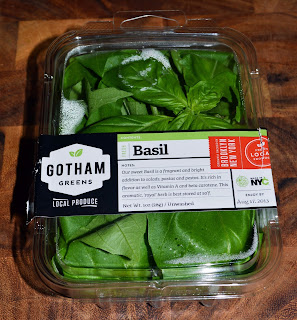Simple. Fresh. Italian. Each of those words describe every meal my wife and I ate while traveling the Amalfi Coast on our honeymoon this summer. Another word was a constant as well, a word we did not expect. We noticed that no matter where we went - Ravello, Amalfi, or Positano - zucchini was everywhere. In pastas. On pizzas. Grilled. Fried. Amalfitans love their zucchini, and with good reason, it is amazing when fresh and in season. I translated my food experiences from that vacation into this dish - zucchini involtini.
This dish is perfect for a weeknight meal, a weekend splurge, or a dinner party with friends. There are three components which can all be done up to a day in advance before putting the involtini in the oven to cook before serving. Another reason why this is a perfect dish is because of the ingredients. Tomatoes, ricotta cheese, zucchini, lemon, and basil can be found pretty much year round in grocery stores. So while this dish is representative of my summer, I fully plan on making it this fall and winter as well.
The first component of this dish is the sauce. Before we get to the filling, the zucchini, or the good olive oil we will drizzle on top before serving, the sauce gets our full attention. A good tomato sauce can elevate a meal just as much as a bad sauce can deflate a meal. The sauce in this involtini is so important. I chose to prepare a simple tomato sauce from a can of San Marzano tomatoes, fresh garlic, dried oregano, sea salt, crushed red pepper, and fresh local basil. That is all. No more, no less. I wanted to give the tomatoes flavor (this predominantly oregano and tomato based sauce is reflective of the taste profile of the marinara sauce Da Michele uses on their pizzas in Naples) but not overwhelm them. Cook the sauce on a simmer for an hour to an hour and a half and then set aside or store it (reheat before using it if you decide to refrigerate overnight).
 Next we move onto the cheese filling. Traditionally, one would think of mozzarella cheese right? And mozzarella would absolutely work here, but for the sake of my waistline I used part-skim ricotta cheese. Important note here, put the ricotta in a sieve over a bowl and lightly salt it, then leave it for a half hour. This will render a lot of the water out of the ricotta and avoid a soggy end product. Add the cheese to a mixing bowl after salting, and then combine with some fresh basil, Meyer lemon zest, olive oil, and black pepper.
Next we move onto the cheese filling. Traditionally, one would think of mozzarella cheese right? And mozzarella would absolutely work here, but for the sake of my waistline I used part-skim ricotta cheese. Important note here, put the ricotta in a sieve over a bowl and lightly salt it, then leave it for a half hour. This will render a lot of the water out of the ricotta and avoid a soggy end product. Add the cheese to a mixing bowl after salting, and then combine with some fresh basil, Meyer lemon zest, olive oil, and black pepper. Enter the zucchini. Slice a zucchini longways into 1/4" thick slices, and then grill the zucchini for 3 to 5 minutes. Once you remove them from the grill pan, set aside and take out some ramekins out of the cupboard. This is the fun part! Spoon a little sauce onto the bottom of the ramekin and then place three slices of zucchini onto the sauce. Make sure one end is longer than the other. Then add the ricotta filling and more sauce (alternate between a layer of cheese and a layer of tomato sauce). Fold up the zucchini and viola! - Zuchhini Involtini ready to go in the oven.
Cook in a 375 degree oven for 10 - 12 minutes and then let it rest for 2 to 3 minutes. Here is a slightly tricky part - the flip. Using an oven mitt to grab the bottom of the ramekin and a spatula to cover the top, turn upside down onto a plate and lift, then slide the spatula out from underneath. Drizzle some good olive oil on top and you have a beautiful and flavorful dish.




































